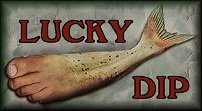
On the twelfth-century Moroccan Sufi black saint
Sidi Abu Yi'zza
also known as Sidi Aboû Ya'zâ
Yâlannoûr,
Sidi Abu Yaaza, and Moulay Bouazza
who died in 1177 C.E.
“Moulay Bouazza” is an enigma—his genealogy and even
the pronunciation of his name are in dispute. According to Vincent Cornell
(Realm of the Saint, pp. 68 ff.), Abu Yi'zza was an “illiterate
and monolingual Masmuda Berber from the mountainous region of Haskura
in the High Atlas." He was also “Shaykh of the Shaykhs of
the Magrib” to his fellow Sufis and a miracle worker to the masses
across Morocco, to whom he had become famous at the time of his death
in an epidemic in 1177, aged over 100 years. His grave is still an important
pilgrimage site, and a town is named after it and him.
During a tax revolt that resulted in an Almohad inquisition, Abu Yi'zza was also implicated and put on trial, because he was aligned with his Sufi master Abu Shu'ayb, who in turn was identified with his master, Ibn Wayhlan. Living in Marrakesh, Ibn Wayhlan had resisted the Almohad siege of the city (which was still in the hands of the remnants of the Almoravid dynasty). After the Berber Almohads took Marrakesh in 1147, they imprisoned Abu Yi'zza in the minaret of the Kutubiyya (main) mosque and interrogated him. Like Abu Shu'ayb, he answered all questions with Qur'anic quotations and was released.
Abu Yi'zza practiced strict vegetarianism, the result of observing a systematic ascetism. To deny his selfish nature, Abu Yi'zza would laboriously prepare simple meals and then refuse all but a tiny portion of them. He wandered about 'the wildernes's eating wild plants for 25 years. For another 20 years he lived in the mountains above Tin Mal, the fortress headquarters of Ibn Tumart, the founder of Almohadism. During this time he wore only a woven reed mat to cover himself. Later, Abu Yi'zza lived for 18 years along the coast, known during this time as “Abu Wanalgut” for eating only wanalgut, a plant that, apparently, grew in trash heaps.
For another period he ate only “the edible hearts of oleanders [? oleander leaves are poisonous] and wild acorn mash, which he would make into flat breads and carry in a small pouch on his belt." Abu Yi'zza practiced Sufic malamatiyya-inspired devotion, the “path of shame,” which is followed so that its practitioners do good without hope of eternal reward. Thus Abu Yi'zza intentionally broke specific religious codes when he felt he was being held in too high esteem.
'One of the companions of Abu Yi'zza got married. His wife asked him for a female slave, but he did not have one. So Abu Yi'zza said to him, “I will substitute myself for the female slave,” for he was black and had no hair on his face. He dressed himself in the clothes of a female slave and served the man and his wife for an entire year. He ground wheat, kneaded dough, made bread, and poured the water—all at night—while in the day he performed his devotions in the mosque. After a year had gone by, the wife said to her husband, “I have never seen anyone like this slave! She does all that is [normally] done during the day at night, and never appears in the daytime.” Her husband turned away from her and neglected to answer, but she continued to ask him until he said, “No one works for you but Abu Wanalgut, and he is no female slave!” Then she knew it was Abu Yi'zza and said, “By God, this one will never work for me again, and I swear that I will do my work myself!” From that time on, she did her work herself.'
According to Cornell, Abu Yi'zza is associated with wildness, identified as “a wild creature of the mountain (Berber adrar) and forest (Berber lghabt)—a liminal being, impervious to domestication, whose potency is accentuated by the fact that his abode lies beyond the bounds of civilisation," beyond the Pale.
Abu Yi'zza's miracles chiefly involved the healing of both people and animals and the knowledge ('ilm or ma'rifa or firasa) of future events which is sent by God. Cornell notes that healing was associated with black skin; since sub-Saharan Africans have to this day held low status in the eyes of both Berbers and Hamitic 'Arabs' in Morocco, one of the few honorable occupations open to them prior to the Almohad revolution was healing. Abu Yi'zza was criticised for his method of healing of women, which involved his touching their bare breasts. When told of the criticism by the Ulama, however, Abu Yi'zza responded, “Do they not allow a doctor to look at that place and touch it out of necessity? Has even one of their doctors become my enemy? I touch only diseased bodies in order to heal them."
Once, when a critic said outside of his presence that Abu Yi'zza was ignorant, and the critic was struck dumb, Abu Yi'zza then healed him saying, “You have spoken the truth … I am ignorant. I know nothing but what my Lord has made known to me.” Cornell notes that this paraphrase of the Qur'an identifies Abu Yi'zza with the Prophet Muhammad, who was also illiterate and knew only what God revealed to him.
adapted from:
http://jprschaefer.blogspot.com/2005/11/my-favorite-black-moroccan-saint.html
Note: SIDI
= holy man or saint
MOULAY = mullah
